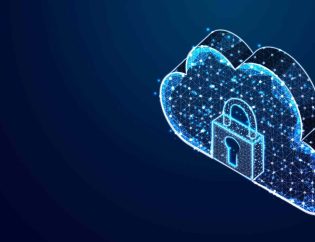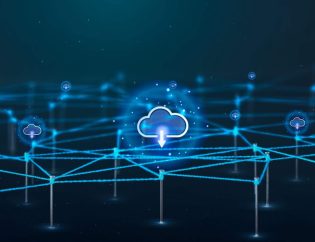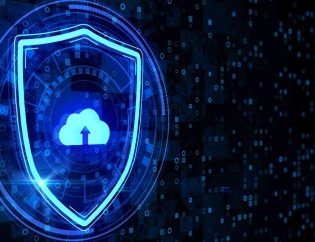
Table of Contents
Introduction
Understanding Cloud Network Security
Common Problems in Cloud Network Security
Important Security Practices for Cloud Protection
Best Ways to Keep Online Data Safe
Role of Compliance and Regulations
Emerging Threats in Cloud Security
Future Trends in Cloud Network Security
Cloud Security Monitoring and Incident Response
Conclusion
Introduction
As more businesses use the cloud, keeping it safe is very important. Companies must protect their cloud systems from threats like data theft, hacking and service crashes. If security is weak, important data can be stolen, causing money loss and harm to a company’s name. This article explains cloud network security, common risks, simple safety tips and the best ways to stay protected online.
Understanding Cloud Network Security
What is Cloud Network Security?
Cloud network security is a way to keep cloud systems, data and networks safe from cyber threats. It includes different tools and rules to protect information, stop hackers and prevent data loss. With strong security, businesses can keep their data private and allow only authorized users to access it.
If cloud security is weak, hackers can steal sensitive data, disrupt services, or cause financial losses. That’s why it is important for companies to take security seriously and follow the best protection methods.
Important Parts of Cloud Network Security:
- Data Encryption – Changes information into a secret code so only the right people can read it.
- Firewalls – Blocks harmful traffic and stops hackers from entering the system.
- Access Control – Decides who can see or use cloud data based on their role.
- Threat Detection – Watches for suspicious activities and stops cyberattacks before they happen.
- Multi-Factor Authentication (MFA) – Adds extra security by requiring a password plus another verification step.
- Regular Security Checks – Finds weak points in the system and helps fix them before hackers can attack.
- Following Rules and Standards – Meets legal security requirements like GDPR and HIPAA to keep data safe.
Common Problems in Cloud Network Security
Many businesses face security problems when using cloud networks. Here are some of the biggest risks:
- Unauthorized Access – If passwords are weak or security is not strong enough, hackers can break into cloud accounts and steal information.
- Data Breaches – Cyber Criminals target cloud storage to steal sensitive data. If the data is not protected properly, it can be leaked or misused.
- Wrong Settings (Misconfigurations) – Mistakes in cloud setup can create security gaps. For example, if a company forgets to lock a database, anyone can access it.
- Insider Threats – Sometimes, employees or other trusted people misuse their access, either by mistake or on purpose, putting company data at risk.
- DDoS Attacks – Hackers can overload cloud systems with too much traffic, making websites and apps slow or even unavailable.
- Compliance Issues – Businesses must follow security laws like GDPR and HIPAA. If they don’t, they may face penalties or legal problems.
- Lack of Monitoring – If companies do not watch their cloud systems closely, they may not notice security threats until it’s too late.
Important Security Practices for Cloud Protection
To keep cloud systems safe, businesses need to follow key security practices. Here are some important ways to protect cloud data:
- Zero Trust Approach (ZTA) – This means no one is trusted automatically, even if they are inside the system. Every user and device must prove their identity before getting access.
- Encryption – Encryption turns data into a secret code so hackers cannot read it. It keeps information safe when it is stored and when it is sent over the internet.
- Identity and Access Control (IAM) – This helps control who can enter cloud systems. Only authorized people should have access to important files and information.
- Security Monitoring (SIEM) – Special tools collect security data from different sources to detect unusual activities. They help businesses respond quickly to cyber threats.
- Following Security Rules (Compliance) – Businesses must follow security laws like GDPR, HIPAA and ISO 27001 to keep customer data safe and avoid fines.
Best Ways to Keep Online Data Safe
To protect important information stored online, businesses should follow these simple security steps:
- Use Extra Login Protection (MFA) – Instead of just a password, users should verify their identity in more than one way, like using a phone code or fingerprint. This makes it harder for hackers to break in.
- Check for Security Problems Regularly – Running security checks helps find and fix weaknesses before attackers can use them to steal data.
- Lock Data with Encryption – Encryption changes data into a secret code so only the right people can read it. This keeps personal and business information safe.
- Keep an Eye on Activity – Automated tools can track who is trying to access files and send alerts if something looks suspicious. This helps stop cyberattacks before they cause damage.
- Teach Employees About Online Safety – Many security problems happen because of mistakes. Training employees to recognize fake emails and use strong passwords helps keep data safe.
- Limit Who Can Access Important Files – Not everyone in a company needs access to all information. Giving permissions only to the right people prevents data leaks.
- Update Security Systems Regularly – Hackers always find new tricks, so businesses must keep their security software and systems up to date to stay protected.
Role of Compliance and Regulations
Security rules help keep information safe. Here are key regulations:
| Compliance Standard | Industry Focus |
| GDPR | Data privacy |
| HIPAA | Healthcare data |
| ISO 27001 | Information security |
| NIST Framework | Cybersecurity |
Emerging Threats in Cloud Security
Hackers are always finding new ways to break into systems. Some of the latest dangers include:
- Cloud-based ransomware – Hackers lock important files stored online and ask for money to unlock them. This can cause big problems for businesses.
- AI-driven cyberattacks – Hackers use smart computer programs to trick security systems. These attacks keep changing, making them harder to stop.
- API weaknesses – Many online services use APIs (tools that help different programs talk to each other). If not protected, hackers can use them to steal data.
- Supply chain attacks – Instead of attacking a company directly, hackers target the online services that businesses depend on. If these services get hacked, all connected businesses could be in danger.
Future of Cloud Network Security
As technology improves, cloud network security will also get better. Here are some important changes we will see in the future:
- AI-powered security – Artificial Intelligence (AI) will help find and stop cyberattacks quickly. It can study patterns, notice unusual activity and protect cloud data in real time.
- Zero Trust security – This means no one is trusted automatically. Every person and device must prove they are safe before getting access to cloud data. This makes cloud network security stronger.
- Blockchain protection – Blockchain can store data in a way that hackers cannot easily change. This makes it more secure and helps prevent cyberattacks.
- Better cloud security tools – New security tools will be designed especially for the cloud. They will adjust to new threats and protect cloud systems more effectively.
Cloud Security Monitoring and Incident Response
Keeping cloud systems safe means always watching for problems and acting fast when something goes wrong. Here are some simple ways to do that:
- Have a security team – A group of experts (Security Operations Center or SOC) can watch for cyber threats all the time. They can find and stop attacks before they cause harm.
- Use automatic security tools – Some tools can quickly stop hackers and harmful software without waiting for human action. This helps protect cloud data faster.
- Make a safety plan – Every company should have a clear plan on what to do if there is a cyberattack. The plan should include steps to find, stop and fix the issue.
- Check activity logs – Cloud systems keep records of everything happening. Special tools can look at these records and warn the security team if something looks strange.
Conclusion
Keeping cloud networks safe is very important as cyber threats continue to grow. Businesses must use strong security measures, the latest technologies and follow security rules to protect their data. By staying alert and prepared, companies can reduce risks and keep their cloud systems safe from attacks.
How Hyper Secure Can Help
Hyper Secure protects cloud networks with AI-driven threat detection, strong access controls, data encryption and 24/7 monitoring. Our solutions keep businesses safe, compliant and secure.
Cloud network security is critical in today's digital landscape. Safeguard against breaches with robust encryption, proactive monitoring and real-time threat detection. 🔒💻🔍 #CloudSecurity #CyberDefense #NetworkSecurity #ThreatProtection #DataSecurity
— Hyper Secure (@HyperSecure) February 25, 2025
Customer Testimonial
“After implementing advanced cloud network security solutions, our organization significantly reduced cyber threats and improved compliance. Hyper Secure provided us with a seamless and robust security framework.” – IT Security Manager, Leading Enterprise.
FAQs
Why is cloud network security important?
Cloud security protects data, applications and infrastructure from cyber threats, ensuring business continuity and regulatory compliance.
What are the biggest security risks in the cloud?
The main risks include unauthorized access, data breaches, weak security settings and not following compliance rules.
How does Zero Trust improve cloud security?
Zero Trust eliminates implicit trust and requires continuous verification of users and devices, reducing the attack surface
What are the best tools for monitoring online threats?
Popular tools include SIEM solutions, intrusion detection systems (IDS) and AI-driven threat detection platforms.
How does Hyper Secure help businesses stay protected?
Hyper Secure provides advanced security solutions, including encryption, identity and access management (IAM) and real-time threat detection to safeguard businesses from cyber threats.








